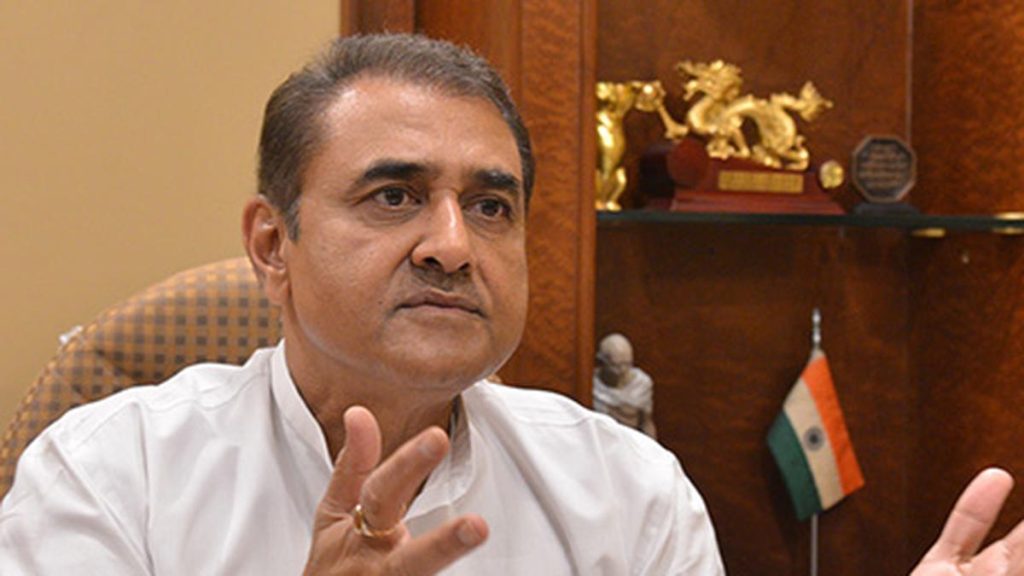Now Reading: This generation is facing a host of completely unique health threats
-
01
This generation is facing a host of completely unique health threats
This generation is facing a host of completely unique health threats

Adolescence can be rife with anxieties and challenges, but today’s youth face unique threats on a scale encountered by no previous generation, according to an exhaustive new report on their health and wellbeing.
More than one billion people aged 10 to 24 are at risk of poor health outcomes by 2030, which is at least half the global adolescent population, concluded the report published on Tuesday in the Lancet, a leading medical journal. Adolescents are experiencing rising rates of obesity and mental health struggles, while also grappling with the influence of digital technologies and a destabilized global climate.
“Even I was shocked by what some of these numbers and future predictions look like,” says Sarah Baird, a professor of global health and economics at the George Washington University and co-chair of the Lancet Commission that produced the report. “It’s clear we’re already in, and going to be increasingly in, a crisis of bad health among young people.”
Lancet Commissions are independent research teams convened by the Lancet to examine specific health topics and recommend policy actions. This report was compiled by 44 experts, including ten Youth Commissioners, who reviewed some 550 peer-reviewed studies since starting their work in 2021. It follows the first report on adolescent health and wellbeing published in 2016.
“What life is like as an adolescent today is very different than ten years ago,” says Baird. “Given all these other competing demands for resources, attention, and focus, adolescents have once again fallen into the background. It’s time to really remind people of why they’re important, and that ignoring them in this time of rapid change is potentially disastrous.”
Though there is some good news in the report’s findings—declining rates of cigarette smoking and alcohol use and better access to education, particularly for girls—the report warns that the health of young people is at “a tipping point” in an uncertain and rapidly changing world. Here are some of the top concerns.

Children play at the showgrounds in the southern New South Wales town of Bega where they are camping after being evacuated from nearby sites affected by bushfires on December 31, 2019.
Photograph by Sean Davey, AFP/Getty Images
A hotter, more unstable climate
This generation will be the first to live their entire lives in the shadow of a destabilized global climate.
By 2100, an estimated 1.8 billion adolescents will be experiencing global temperatures that are roughly 5°F (2.8°C) hotter than pre-industrial times, a shift that will intensify extreme weather, food insecurity, biodiversity loss, social instability, and heat-related diseases around the world.
“I think it’s hard for people to fully recognize what a hotter world means for health and wellbeing,” says Baird. “Young people are going to be around a lot longer than the older generation, and they have the most to lose from not investing in the future. Unfortunately, they’re not often the ones who are in the seat of power to make these decisions.”
The digital generation
Adolescents “are the first global generation of digital natives,” according to the report.
Globally, 79 percent of 15 to 24-year-olds have internet access, while 95 percent of adolescents in high-income and upper-middle-income countries are online.
Digital technologies unlock immense opportunities. But they can also expose young people to misinformation, cyberbullying, and disturbing content, while increasing social isolation and physical inactivity.
The risks and benefits of digital technologies will be “supercharged” by the maturation of artificial intelligence, the report warns. There’s no one-size-fits-all solution to this complex problem, so the report offers a variety of approaches to confront it on all levels.
“There are very strong opinions around social media and digital access, but I feel like it is a very nuanced story,” Baird says.
You May Also Like
“There’s also a really important role for parents, for teachers, and for young people themselves,” she adds. “With AI, it’s going to require really smart people and really rapid policy change to ensure that young people are not harmed throughout this process.”
Obesity rates are skyrocketing
Obesity rates are rising in all parts of the world and since 1990 have increased as much as eight times in parts of Africa and Asia. The report forecasts that roughly 464 million adolescents globally will be overweight or obese in 2030 (143 million more than in 2015), a trend that will increase the risk of obesity-related conditions, such as Type-2 diabetes and heart disease.
Rising adolescent obesity is linked to increased availability of unhealthy food, which is often more affordable and accessible than nutritious alternatives. Sugary beverages, like sodas or energy drinks, are a key driver of the problem: Adolescent consumption of these drinks has increased by 24 to 33 percent in every region except high-income countries, Latin America, and the Caribbean. More than half of adolescents on Earth now consume sugar-sweetened beverages at least once a day.
Additionally, the report found that adolescents have adopted more sedentary lifestyles with lots of screen time or because air pollution, extreme weather, and other factors limit their ability to participate in sports or outdoor exercise.
To combat obesity in adolescents, the report recommended implementing sugar taxes and expanding youth sports and fitness programs to underserved communities.
A mental health crisis
One of the report’s most heartbreaking projections is that 42 million years of healthy life will be lost to mental disorders or suicide in 2030, which is two million more than in 2015. Mental health is “the single largest cause of disease burden among adolescents across all countries,” according to the report.
This number corroborates a widespread and well-documented mental health crisis for young people fueled by long-term trends—such as digital technology and climate change—and recent catastrophes, especially the COVID-19 pandemic.
“Imagine these massive disruptions during these critical years,” Baird says. “They’ve lost education and abilities to interact with people, coupled with multiple economic crises. Potentially, they’re living in a poorer and more stressed world.”
The report recommends expanding mental health services to adolescents and empowering communities to address causes of their stress, anxiety, and depression.
Can these trends be reversed?
Aoife Doyle, an associate professor of epidemiology who specializes in adolescent health at the London School of Hygiene and Tropical Medicine, agrees that adolescent health and well-being is at a tipping point.
“The Lancet report provides data to show firstly that too little is invested in adolescent health and well-being and secondly that investments do not align with the adolescent burden of disease,” says Doyle, who was not involved in the report, in an email.
“These compelling data should motivate governments and donors to take steps to fulfill their pledges to universal health coverage and provide more appropriate and comprehensive health services for adolescents,” she adds.
It’s also worth noting that none of these trends are occurring in isolation. Obesity and mental health are profoundly impacted by digital technologies and climate stress, for instance. Still, Baird is encouraged by the resilience and determination of young people in confronting these complex challenges.
“Young people are optimistic and have hope,” Baird says. “Many are still very optimistic about what the future holds and want to do what they can to make the future look better.”
























